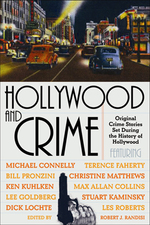One of the big arguments fanficcers like to make is that copyright is too restrictive and that the rules should be loosened up. Once something is published, they argue, it should belong to the world.
The fanfic take on copyright is one championed, oddly enough, by proponents of Google’s effort to digitize books into their database. The New York Times ran a piece a week or two ago in which Wired contributor Kevin Kelly argued in favor a digital library that would make all books available for free to people around the world. He believes that the original purpose of copyright was to give authors an incentive to keep working, but that now that intent has been warped to benefit the commercial interests of corporations. Books, Kelly argues, should now become public domain shortly after publication for any derivative use you can imagine. On this issue, he wrote, in part:
But the 1976 law, and various revisions and
extensions that followed it, made it extremely difficult to move a work
into the public commons, where human creations naturally belong and
were originally intended to reside. As more intellectual property
became owned by corporations rather than by individuals, those
corporations successfully lobbied Congress to keep extending the
once-brief protection enabled by copyright in order to prevent works
from returning to the public domain. With constant nudging, Congress
moved the expiration date from 14 years to 28 to 42 and then to 56.
While
corporations and legislators were moving the goal posts back,
technology was accelerating forward. In Internet time, even 14 years is
a long time for a monopoly; a monopoly that lasts a human lifetime is
essentially an eternity. So when Congress voted in 1998 to extend copyright an additional 70 years
beyond the life span of a creator—to a point where it could not
possibly serve its original purpose as an incentive to keep that
creator working–it was obvious to all that copyright now existed
primarily to protect a threatened business model. And because Congress
at the same time tacked a 20-year extension onto all existing
copyrights, nothing–no published creative works of any type–will fall
out of protection and return to the public domain until 2019. Almost
everything created today will not return to the commons until the next
century. Thus the stream of shared material that anyone can improve
(think “A Thousand and One Nights” or “Amazing Grace” or “Beauty and
the Beast”) will largely dry up.
Sara Nelson, editor of Publishers Weekly, took exception to this and I agree with her views. She said, in part:
Such a suggestion, frankly, disavows the amount of work—the
amount of time!—it actually takes to create a book, not to mention the
lack of financial reward that comes, even in this era of inflated
advances, during that sometimes lifetime-long process. Why shouldn’t
generations of Joyces or Morrisons or, more pointedly, Richard Yateses,
benefit from the work that the authors scraped by to produce? Believing
that your book could become a source of enlightenment for generations
is a great thing, of course. Knowing that it might provide some comfort
for your own great-great-grandchildren ain’t such a bad incentive
either.
[…]Yes, it’s hard to keep track of copyright, especially when
publishers (who, essentially, "lease" copyright from the author)
disappear and morph and merge, as they do […] But as books become digital files that
require few warehouse fees, and the whole notion of "out of print"
becomes moot, copyright should be similarly simplified: it should rest
with the author, or his descendants, for way longer than they both
shall live.
Your thoughts?





